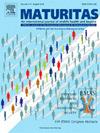中国极端长寿人群的代谢分析确定溶血磷脂物种是人类寿命的潜在生物标志物
IF 3.6
2区 医学
Q2 GERIATRICS & GERONTOLOGY
引用次数: 0
摘要
代谢调节在延长包括人类在内的多种生物的健康寿命和寿命方面起着至关重要的作用。尽管许多研究已经确定了世界范围内长寿人群的代谢组特征和潜在的生物标志物,但中国百岁老人的代谢组景观在很大程度上仍然未知。本研究描述了中国百岁老人和九十岁老人的血浆代谢特征,并确定了潜在的长寿生物标志物。方法采用全球非靶向代谢组学方法,对来自中国长寿地区丽水地区的65名百岁老人(平均年龄101.72±1.46岁)、53名百岁老人(平均年龄98.92±0.27岁)、47名老年人(平均年龄64.66±3.31岁)和35名中年受试者(平均年龄33.91±3.53岁)的血浆样本进行分析。结果百岁老人和百岁老人的血浆代谢谱与年轻人群有显著差异。具体来说,在百岁和九十岁人群中分别鉴定出211和114种差异丰富代谢物(DAMs)。这些dam主要是甘油磷酸乙醇胺、甘油磷酸胆碱、脂肪酯、脂肪醇、脂肪酰基、脂肪酸和缀合物。例如,百岁老人血液中LysoPA(20:2)、LysoPA(20:3)、LysoPC(16:0)、LysoPC(18:2)和LysoPE(20:4)的水平明显低于中老年组。在90多岁人群中也观察到类似的模式。值得注意的是,随着年龄的增长,血浆中LysoPA(20:3)、LysoPC(18:2)、LysoPE(20:4)、PG(18:0/18:1)和PG(18:1/18:2)的水平显著且持续降低。Pearson相关分析显示,从中年到百岁,LysoPA(20:3)、LysoPC(18:2)、LysoPE(20:4)、LysoPE(24:0)、PG(18:0/18:1)和PG(18:1/18:2)的丰度降低与寿命呈显著负相关。ROC分析表明,LysoPA(20:3)、LysoPC(18:2)、LysoPE(20:4)、LysoPE(24:0)、PG(18:0/18:1)、PG(18:1/18:2)以及这6个大坝的组合(AUC = 0.9074)对人类长寿表型具有较高的预测能力。结论本研究阐明了中国百岁和九十岁老人的血浆代谢格局,并确定了几个潜在的预测人类寿命的生物标志物。我们的发现将有助于了解长寿的代谢调节,并可能促进未来老年学的临床实践。本文章由计算机程序翻译,如有差异,请以英文原文为准。
Metabolic profiling of the Chinese population with extreme longevity identifies Lysophospholipid species as potential biomarkers for the human lifespan
Background
Metabolic regulation plays a crucial role in extending the healthspan and lifespan across multiple organisms, including humans. Although numerous studies have identified the characteristics of the metabolome and potential biomarkers in long-lived populations worldwide, the metabolome landscape of Chinese centenarians remains largely unknown. This study characterised the plasma metabolic profiles of Chinese centenarians and nonagenarians and identified potential biomarkers of longevity.
Methods
A global untargeted metabolomics approach was used to analyze plasma samples from 65 centenarians (average age 101.72 ± 1.46 years), 53 nonagenarians (average age 98.92 ± 0.27 years), 47 older individuals (average age 64.66 ± 3.31 years), and 35 middle-aged participants (average age 33.91 ± 3.53 years) recruited from the Lishui region, an area of China well known for the longevity of its population.
Results
The plasma metabolic profiles of centenarians and nonagenarians differed significantly from those of the two younger populations. Specifically, 211 and 114 differentially abundant metabolites (DAMs) were identified in the centenarian and nonagenarian groups, respectively. The majority of these DAMs were glycerophosphoethanolamines, glycerophosphocholines, fatty esters, fatty alcohols, fatty acyls, and fatty acids and conjugates. For example, the circulating levels of LysoPA (20:2), LysoPA (20:3), LysoPC (16:0), LysoPC (18:2), and LysoPE (20:4) were significantly lower in centenarians than in the older and middle-aged groups. A similar pattern was also observed in the nonagenarian population. Notably, the plasma levels of five DAMs – LysoPA (20:3), LysoPC (18:2), LysoPE (20:4), PG (18:0/18:1), and PG (18:1/18:2) – were significantly and continuously reduced with the ageing process. Pearson correlation analysis revealed that the reduced abundance of LysoPA (20:3), LysoPC (18:2), LysoPE (20:4), LysoPE (24:0), PG (18:0/18:1), and PG (18:1/18:2) was significantly and negatively associated with lifespan, from middle-age to centenarian. ROC analysis indicated that LysoPA (20:3), LysoPC (18:2), LysoPE (20:4), LysoPE (24:0), PG (18:0/18:1), and PG (18:1/18:2), as well as the combination of these six DAMs (AUC = 0.9074), had high predictive power for the human longevity phenotype.
Conclusion
This study elucidated the plasma metabolic landscape of centenarians and nonagenarians in China and identified several potential biomarkers for predicting human lifespan. Our findings will aid in understanding the metabolic regulation of longevity and may promote the clinical practice of gerontology in the future.
求助全文
通过发布文献求助,成功后即可免费获取论文全文。
去求助
来源期刊

Maturitas
医学-妇产科学
CiteScore
9.10
自引率
2.00%
发文量
142
审稿时长
40 days
期刊介绍:
Maturitas is an international multidisciplinary peer reviewed scientific journal of midlife health and beyond publishing original research, reviews, consensus statements and guidelines, and mini-reviews. The journal provides a forum for all aspects of postreproductive health in both genders ranging from basic science to health and social care.
Topic areas include:• Aging• Alternative and Complementary medicines• Arthritis and Bone Health• Cancer• Cardiovascular Health• Cognitive and Physical Functioning• Epidemiology, health and social care• Gynecology/ Reproductive Endocrinology• Nutrition/ Obesity Diabetes/ Metabolic Syndrome• Menopause, Ovarian Aging• Mental Health• Pharmacology• Sexuality• Quality of Life
 求助内容:
求助内容: 应助结果提醒方式:
应助结果提醒方式:


